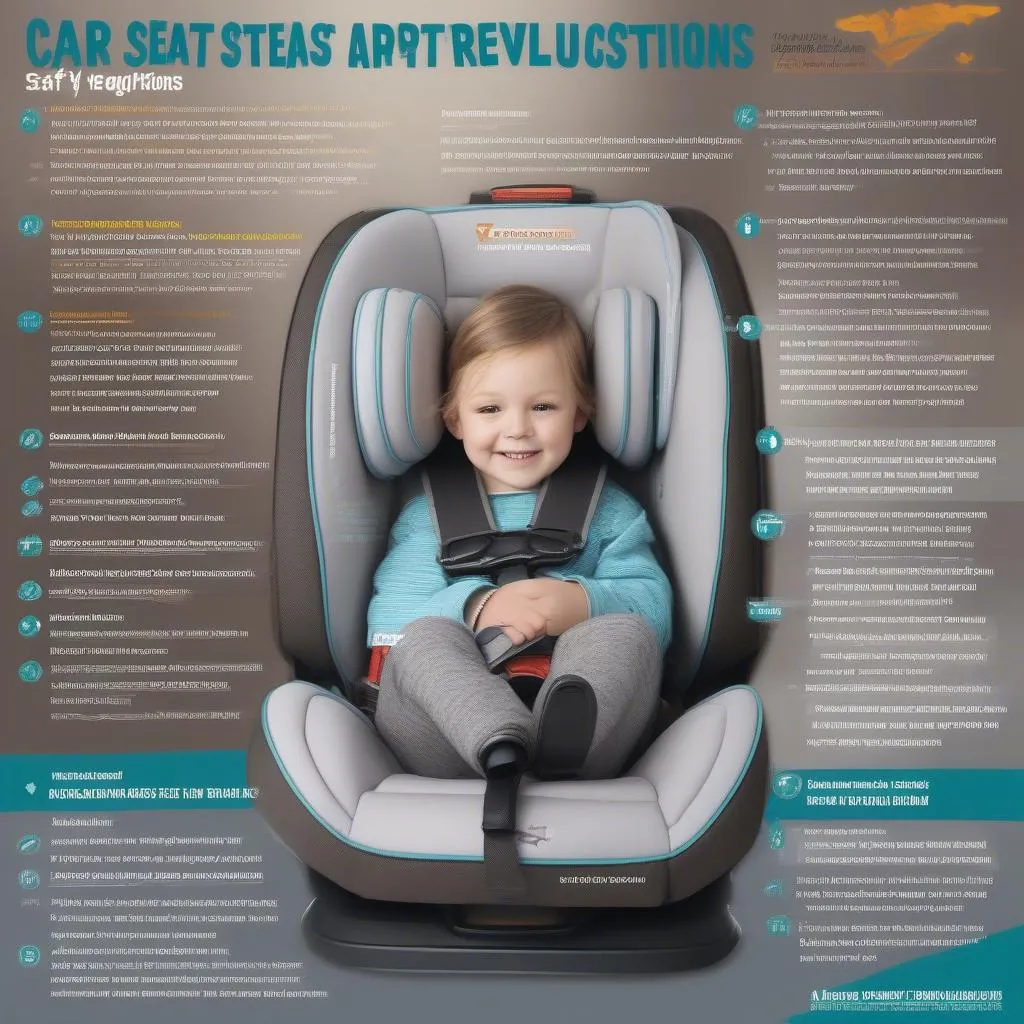Ever wondered how long your car seats are good for? It’s a common question, especially when you’ve got little ones on board. You want to make sure they’re safe and secure in their seats, but how do you know when it’s time for a new one? Let’s dive into this important topic.
The Importance of Car Seat Safety and Age
Car seats are essential for protecting your precious cargo. They’re designed to absorb impact in a crash, keeping your child safe. But like any safety equipment, they have a lifespan. The good news is, there are no strict age limits for car seats. The focus is on safety and proper fit.
When is a Car Seat Too Old?
There are several factors to consider when determining if a car seat is past its prime:
- Manufacturing Date: Every car seat has a manufacturing date, typically found on a sticker or label. It’s crucial to know this date to determine the age of the seat. A general rule of thumb: a car seat older than 6 years is considered past its expiration date.
- Crash History: If your car seat has been involved in a major accident, even if it appears undamaged, it’s essential to replace it immediately. Even a minor collision can compromise the structural integrity of the seat.
- Wear and Tear: Over time, car seats can show signs of wear and tear, such as rips, tears, or fading. This wear and tear can compromise the seat’s ability to protect your child.
- Changes in Vehicle: If you’ve switched vehicles, it’s essential to re-install the car seat and ensure it’s a proper fit for your new car.
The “Best-By” Date is a Guideline, Not a Hard Limit
While the “best-by” date for a car seat is a good guideline, it’s not a definitive expiration date. It’s important to also consider the car seat’s condition and your child’s size and weight. If your car seat is older than 6 years but in excellent condition, it’s crucial to assess the seat’s structural integrity and consult with a certified car seat technician before making a decision to replace it.
Don’t Forget About the Expiration Dates on Components
It’s not just the car seat’s overall lifespan that matters. Individual components, like the straps and buckle, also have expiration dates. These dates are typically printed on the components themselves.
Tips for Finding the Right Replacement
Once you determine it’s time for a new car seat, choosing the right one is crucial.
- Consult with a Certified Car Seat Technician: They can help you choose the right car seat for your child’s age, weight, and height. They’ll also be able to ensure the seat is installed correctly in your vehicle.
- Read Reviews: Check out online reviews from other parents to get insights into the pros and cons of various car seat models.
- Check for Recalls: Make sure to check for any recent recalls on the car seat you’re considering. The National Highway Traffic Safety Administration (NHTSA) website is a great resource for this information.
Important Considerations: Car Seat Regulations Vary by State and Country
Remember that car seat regulations vary by state and country. Some states may have stricter regulations than others. It’s vital to research your local laws and ensure you’re complying with them. For example, in California, children under the age of 2 are required to ride in rear-facing car seats.
FAQs about Car Seat Lifespans and Safety
Q: Can I use a used car seat?
A: While it might be tempting to use a used car seat, it’s generally not recommended. The history of the seat might be unknown, and there’s a risk of hidden damage or expired components.
Q: What about car seats for older children?
A: As your child grows, they will eventually transition to a booster seat, which provides additional height and protection. Booster seats are also subject to safety regulations, and you should ensure you’re using one that’s appropriate for your child’s age and size.
Q: Are there any resources available to learn more about car seat safety?
A: Yes! You can find valuable information on car seat safety from organizations like the National Highway Traffic Safety Administration (NHTSA) and the American Academy of Pediatrics (AAP).
 car-seat-safety-regulations
car-seat-safety-regulations
Conclusion
Keeping your children safe in the car is a top priority. Remember, the best way to ensure your child’s safety is to choose a car seat that’s appropriate for their age and size, install it correctly, and replace it when necessary.
If you have questions or need assistance with car seat selection or installation, don’t hesitate to contact our team at Diag XCar via Whatsapp: +84767531508. We’re here to help you keep your little ones safe on the road.
Have more questions about car seats? Check out our other articles:


